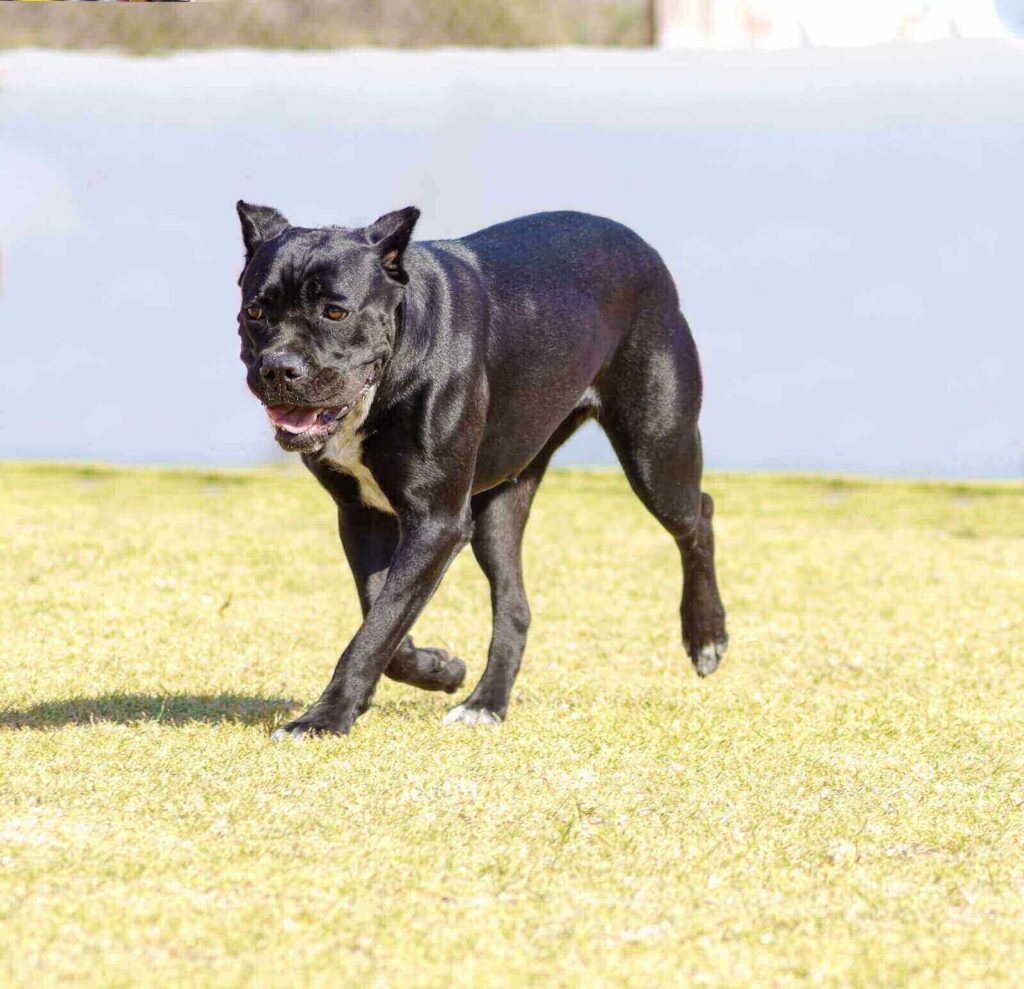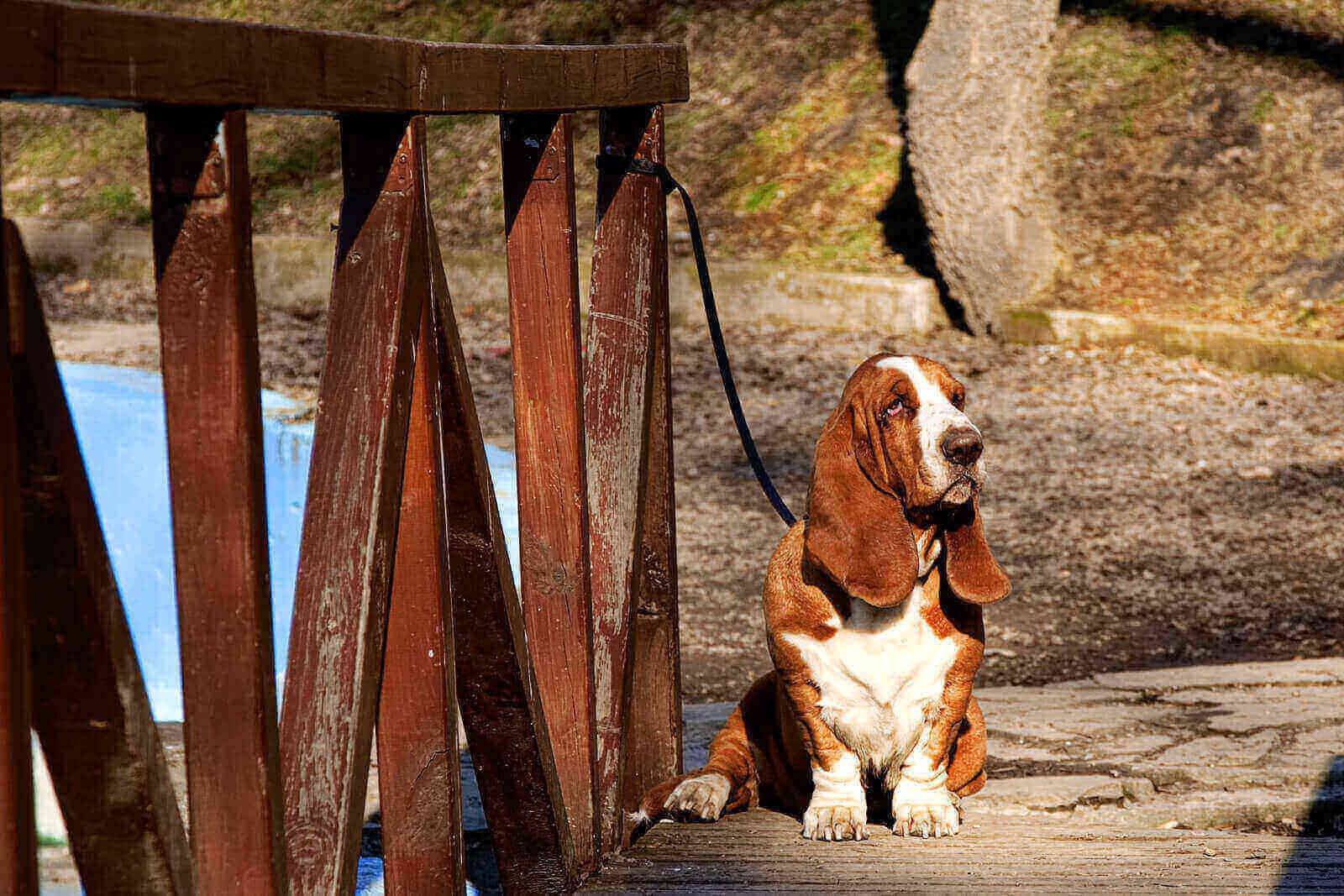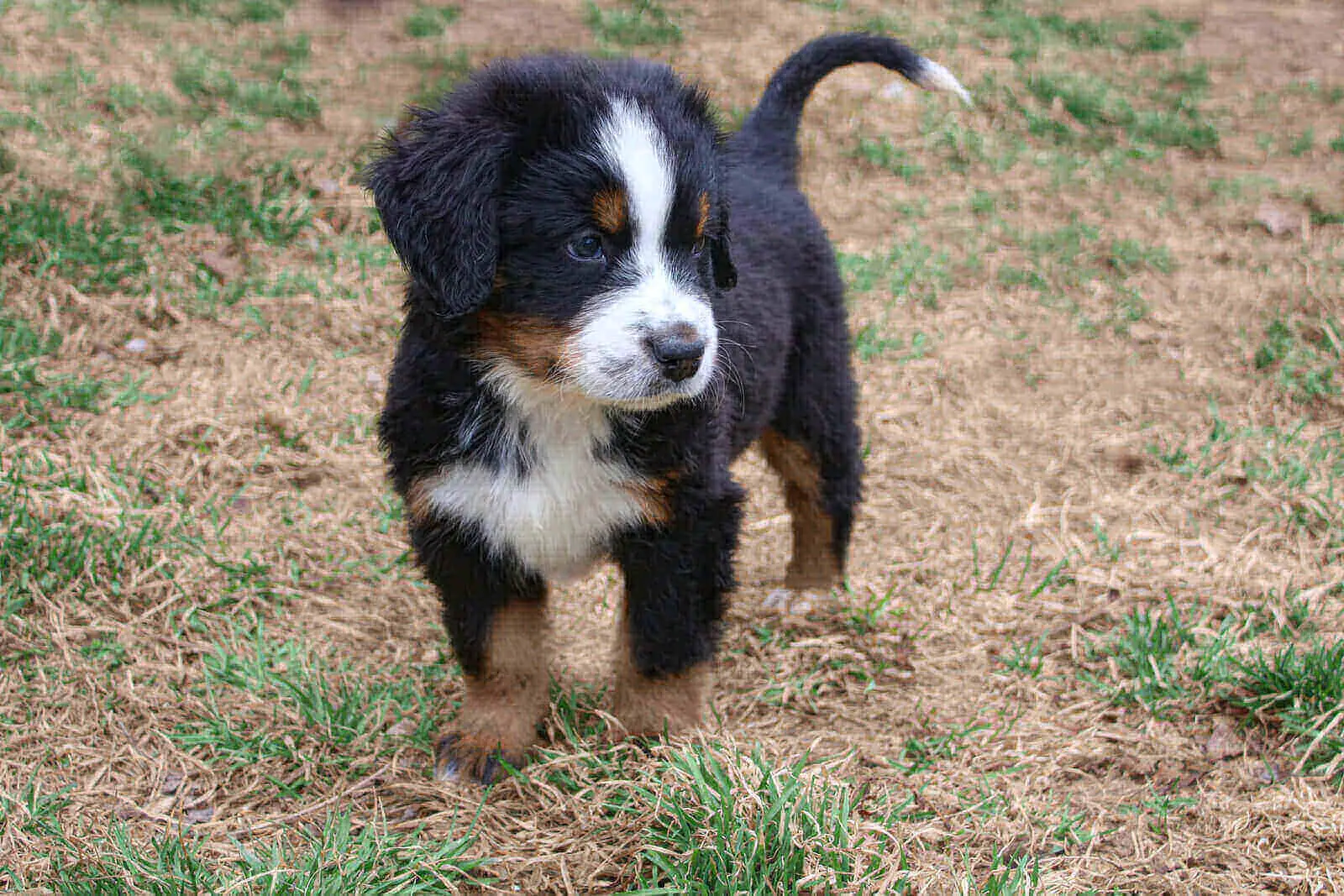The Cane Corso dog is an Italian mastiff-like breed. Today the Cane Corso dogs are still used in many parts of the world as guide dogs, hearing dogs, scent hounds, and for many other purposes.
There are many Cane Corso colors that this cute dog breed comes with. Although Cane Corsos are now available in many colors, the original black color is still very popular.
Cane Corso has a sweet and kind personality that makes them great companions. These dogs also make wonderful family pets. There are so many choices of Cane Corso colors to choose from.
No matter what you are looking for in a dog, Cane Corso is sure to have something that will suit you and your family.
What Breeds Make Up The Cane Corso?
The breed is actually a descendant of the Mastiff and was bred to make a lighter version of this breed. If you want a well-built, athletic dog, then the Cane Corso makes an excellent choice. Cane Corso was brought to the U.S in 1987, and AKC recognized this breed in 2010.

People are looking for Cane Corso because it has a variety of colors. Some of the dog owners only see Cane Corso in terms of the rare Cane Corso colors of their coat because it is unique and adorable.
Does Cane Corso Color Coat Really Matter?
Yes, the Cane Corso Colors really matter. A dog’s coat is a little proof that affects their behavior and temperament. There is also a color coat that signifies some health issues that exist in a particular breed like merle Cane Corso.
Although not 100%, it can be a reference for you when choosing Cane Corso colors before maintaining it.
Also, it is important to remember that choosing Cane Corso colors and variations for your dog should be done based on how it looks. When you are choosing a color for yourself, you are deciding on your dog’s overall appearance.
What Are The Various Cane Corso Colors?
Cane Corso dog breeds have gained popularity in the past decade. Some of the more popular colors for these dogs include: Cane Corso Grey, Cane Corso chocolate, Formentino Cane Corso, Cane Corso brindle, and fawn Cane Corso.
Before explaining further one by one, let’s have a look at the Cane Corso color chart.
| Colors | Registration Code |
| Black | 007 |
| Fawn | 082 |
| Gray | 100 |
| Gray Brindle | 107 |
| Red | 140 |
| Black Brindle | 279 |
| Chestnut Brindle | 520 |
Choosing the various Corso dog colors that can suit you and your family the best depends on what you want for your dog.
Some people prefer certain dog breeds to others, and when it comes to pets, you will find out what you like sooner or later when you take a look at the variety of Cane Corso colors available.
Grey Cane Corso
A Cane Corso colors grey is a breed that some people find cute. This breed has a naturally beautiful coat and sometimes is called Cane Corso blue, but it does require a little extra care to keep the hair in great condition.
Many of you will find Cane Corso grey blue eyes while they’re still puppies and will change to honey-colored eyes when it reaches adulthood.
Chestnut Brindle Cane Corso
The Cane Corso colors chestnut brindle is one of the many breeds that share the breed’s reputation for producing beautiful, unique dogs. With its mellow chestnut coloring, a dog with this coloring is often a favorite among dog owners.
The chestnut markings that are found on this dog are unique. Although there are variations of chestnut markings found on other types of dogs, chestnut Cane Corso colors are one of the most difficult colors for breeders to achieve.
Fawn Cane Corso
For the most part, fawn Cane Corso is a very healthy dog. Their coats are long and silky, giving a look similar to that of the Mastiff. Cane Corso colors fawn is more common than red Cane Corso.
Red fawn Cane Corso has a black mask as its markings, and the mask never exceeds the eyes. Younger red or fawn Cane Corso colors often have black or blue saddle, but they will fade over time. The eye color will match with the coat. Cane Corso blue eyes will have a blue fawn coat.
Gray Brindle Cane Corso
Cane Corso colors grey brindle is a unique and lovely breed of dog. Brindle Cane Corso dogs also make wonderful pets because they are very calm and quiet. They tend to be quite protective of their home and territory and are often the only dog in a household that will not bark at other dogs.
There is also a variant of gray grindle, namely reverse gray brindle Cane Corso. The pattern switches as a reverse, light-stripes appear over a dark-colored background.
Tawny Cane Corso
The standard coloring for a Tawny Cane Corso dog is a dilute shade of silver that is easily spotted on an outside dog. However, if you look closely, you will see that the pink of the coat is only on the belly, on the sides, and around the eyes.
The Tawny Cane Corso dog will have round, heavy, and red-tipped ears. These are characteristics that go along with a very calm and gentle personality.
Black Cane Corso
Black Cane Corso is a common color in this breed. The standard percentage of black cover dogs is seventy percent when it comes to coloring.
The Black Cane Corso dog breed is well known for its loyalty. It will follow its master to the letter while showing outstanding obedience.

If you have black Cane Corso yellow eyes, it will definitely look intimidating. The yellow eyes supposedly give super night vision to Cane Corso and make him a better guard dog in the night. Yellow eyes in Cane Corso are not the AKC standard, same as Cane Corso blue eyes.
White Cane Corso – Albinism
White Cane Corso is a member of the Alpha Albinism group of dogs. Any cane Corso which displays any of the following signs should be reported to the American Kennel Club (AKC).
While there is no solid proof that White Cane Corso Albinism is the cause of the albino condition, it should be mentioned that all albino animals are believed to be the result of genetic defects. These genetic faults have led to the development of all albinos’ breeds, including the White Cane Carso colors.
Liver Cane Corso
There are many liver Cane Corso dogs’ colors, and finding the right dog for you and your family can be a difficult decision. Some people prefer the lighter brindle coat, but there are also people out there who prefer the darker, earthier shades of Liver Cane.
Liver Cane is very different from red Cane Corso because it can be distinguished from their skin around their eyes is pink. Some also have a pink nose or liver color.
Black Brindle Cane Corso
The Cane Corso black brindle is often referred to as tiger stripes in black color. These Cane Corso colors are normal and don’t have any genetic health issues.
The reverse black brindle Cane Corso has lighter stripes over the black body background, and the black brindle has darker stripes over the lighter background.
According to Evzen Korec (prominent breeder from the Czech Republic), the black brindle Cane Corso has the longest lifespan among other coat colors.
Formentino Cane Corso
When people ask about “what is formentino Cane Corso?” The answer is called blue fawn Cane Corso. The name of formentino resembles fermented wheat, and the Italian translation for this is “Formentino.”
Red Cane Corso
Cane Corso colors that look like a red Minpin because of pheomelanin on their pigment. Cane Corso colors red have an array of red shades because the red pigment concentration is different in every genetic pathway. The red Cane Corso Puppies have a black or grey mask around their eyes.
Blue Blood Cane Corso
The blue blood is different from Cane Corso colors blue brindle because this is a hybrid from Cane Corso and Alapaha Blue Blood Bulldog.
Because the Alapaha blue blood Bulldog is rare, making this hybrid becomes even rarer than that. This hybrid has the same characteristics, so it is often referred to as a perfect mixture.
Are Blue Cane Corsos Rare? Do They Exist?
Yes, the blue Cane Corso exists. This is a genetic pigment dilution from black to grey. There are also blue brindle Cane Corso (Grigio Tigrato) and Cane Corso reverse blue brindle. Because of the unusual color of these Cane Corso Colors, it has become popular as a blue Cane Corso among breeders.
Blue Cane Corso puppies often become the target of dog owners because they are unique and also cute. The breeders keep breeding dogs to produce the unique color seen in the Cane Corso blue dogs.
What Is The Rarest Cane Corso Color?
The rarest Cane Corso colors are called tri color Cane Corso which are formentino, liver, and Isabella fawn. These rarest colors are a result of recessive genes.
The breeders can achieve these Cane Corso colors without crossbreeding or genetic manipulation. You will rarely see a dog owner in the USA having a Formentino Cane Corso or Cane Corso blue fawn.
What Are The Most Common Cane Corso Colors?
According to Evzen Korec, the most common Cane Corso colors are black. There are many different colors, and some of the more popular ones are the solid Cane Corso black, the black and tan Cane Corso, the chocolate-brown Cane Corso, and the Cane Corso colors black and tan with a white tip.
You don’t need to be confused about finding Cane Corso black because you can easily find it in a breeder who has Cane Corso. It is very different from the formentino Cane Corso and Cane Corso blue, which you have to look for carefully and at a relatively high price.
Cane Corso Color Coat Gene History – Why Does Cane Corso Have Many Different Color Coats?
Some people think that all Cane Corso dogs are a mix of black and white, even though it only explains why the Cane Corso colors black brindle appears.
Cane Corso colors vary because it’s modified by the genes from their parents. We need to take a look at genetic analysis for each color from the two types of pigments. Phaeomelanin affects a dog’s coat color, and Eumelanin affects a dog’s coat, nose, and eyes.
The eumelanin standard is black, but it can be diluted into pale brown and turn into blue or gray and brown. And the phaeomelanin produces tan, cream, red, orange, and other related Cane Corso colors. The gene history becomes as phaeomelanin influences the Eumelanin.
That’s why at first, there was only black Cane Corso, and it can be a variety of colors such as Cane Corso blue, Formentino Cane Corso, Fawn brindle Cane Corso, and many other types of colors.
Lifespan Of Cane Corso Compared To Color Coat
A 2017 study from Evzen Korec with more than 200 Cane Corso dogs across 25 countries found a different lifespan than the Cane Corso colors. The longest lifespan is black brindle dogs, with an average of 10.3 years.
Another brindle dog has an average of 10.1 years, then grey brindle or Cane Corso blue brindle with 9.8 years. Black, fawn, and grey have the same average with 9.0 years, and other Cane Corso colors have 8.1 years.
Does Cane Corso Puppy Change Color While They Grow?
That is dependent upon the individual dog. Although your Cane Corso colors may change color when they grow, it is not common and usually occurs during the final stages of puppyhood.
Cane Corso puppies can change their color by becoming darker or lighter. Gray Cane Corso puppy can turn into bridle variation, and the coat will change gradually.
Such as Cane Corso blue puppies, which can change their color in their adulthood, become Cane Corso fawn brindle or gray Cane Corso.
Cane Corso Eye Colors
When Cane Corso began in Italy, their eye colors were simply perfect: cool, natural, and vibrant. They didn’t try to be alluring or innovative-they just made eye colors that looked natural.
Today, you can find a wide variety of colors in a variety of different shades. So no matter what your natural eye color is, like Cane Corso blue eyes, or black eyes, you can be sure to find something from Cane Corso that will match perfectly.
The CaneCorso eyes are medium-size with almond shape and not round. The pigmentation of the eye rim will match with pigmentation Cane Corso colors. There are several kinds of Cane Corso eye colors, namely blue eyed Cane Corso (disqualification), Cane Corso yellow eyes, black eyes, and dark brown eyes.
I don’t have to tell you how great these eye colors are, but I’d also like to take a few moments to mention one minor point. Because Cane Corso blue has so many amazing eye colors, it might be tempting to choose one of the best.
Cane Corso Nose Colors
Similar to the eye color, the pigment color of the nose follows from their pigment color coat. Cane Corso colors are determined by the amount of melanization that takes place during the breeding of the sire.
It should be noted that breeding two sires with the same coloring of Cane Corso can result in a dog that will have an almost identical color as that of your own Cane Corso.
There have been reports that many of the more colorful corns have carried genes that cause their coloring to be carried on only one side of the Cane Corso’s nose, which is why some of the dogs are completely black or white, while others may still have a bit of black in them.
For example, liver Cane Corso will have a liver color nose, and formentino Cane Corso will have a light brown color nose.
Frequently Asked Questions (FAQ)
There are many questions about Cane Corso related to rare Cane Corso colors and Cane Corso’s temperament. After all, they not only come in one color and one size, so it’s easy not to know much about them.
Do Cane Corsos Come In White?
If you are looking for a blue Cane Corso that is closer to white, you will find many of it. But if you are looking for pure white Cane Corso colors, it not exist. If you ask about the white Cane Corso price, then you will find a price range of around $ 2500 and more.
If you are looking for Cane Corso blue eyes or Cane Corso blue nose, you can still look for them at local breeders. But if you want to find pure white, you will be very difficult to find. Maybe you find Cane Corso predominantly white, but not in the color of the nose and eyes.
What Is A Blue Blood Cane Corso?
This is a hybrid dog from Alapaha and Cane. Both have many similarities, such as color, size, and temperament. This hybrid is a combination of Alapaha that originates from the United States and Cane Corso that originates from Italy.
Blue Blood Cane Corso colors are extremely rare because Alapaha itself is a rare breed. The purpose of mixing these breeds is to make guarding dogs and companions.
The Cane Corso blue blood has an average weight of 50 – 100 lbs and a height of 18 – 26 inches.
There are several major concerns of this hybrid, such as Hip Dysplasia and Entropion. Before you choose Cane Corso blue blood, make sure you do occasional tests such as physical examination, allergy tests, and x-rays.
What Is A Formentino Cane Corso?
“Formentino” is Italian which means fermented wheat. It can also be interpreted as a dilution of a fawn coat. Cane Corso Formentino has a full gray coat with a gray mask. Formentino is also often referred to as Cane Corso fawn, even though the color is more diluted than the original fawn.
The solid formentino Cane Corso is the rarest coat color that you’ve ever seen. If you want to find a formentino, make sure you look for parents who have red or fawn in their coat color. The dilute gene will create the gray mask and fermented wheat coat color.
Are Cane Corso Good With Kids?
You need to know that Cane Corso dogs are very popular in the United States and have been for a few years. This is because they are a great option for any family.
Although the price is not low, this is usually due to the dogs’ quality and not because the company has a low price. If you can afford it, there is no reason that you should not get one for your child as there are many benefits that come with them.
The first thing that you will find is that Cane Corso blue eyes are very active. They love to run around, chase each other and play. Another benefit is that they are very gentle with kids despite their rough exterior. They tend to be slightly on the passive side, but this is usually balanced out by their willingness to play with kids.
The blue Cane Corso is good at playing with and taming little kids, making them good choices for older kids. They are gentle with the young but can be quite stubborn with the old. You will need to watch for this and make sure that the kid is ready for the dog and that the kid is not trying to push the dog around.
5 Cane Corso Colors And Markings AKC
The American Kennel Club has standards for Cane Corso colors and markings.
The five colors are
- Black
- Fawn
- Gray
- Red
- Brindle
Meanwhile, there are two markings, namely gray and black masks.
Several color mixes are standard and have registration codes, such as Cane Corso colors black brindle, Chestnut brindle, and gray brindle. You can see the registration code and standard color from AKC in the table above.

Final Verdict – Cane Corso Colors
Before choosing Cane Corso colors, you need to consider many things. First, you have to make sure that your pet is in good health condition.
It means you need to see your pet’s health record for any illness and be aware of any diseases or conditions that may cause your pet to lose its natural color.
Second, you need to know what type of coat your dog has. Some dogs have natural darker color coats, while some dogs have lighter color coats. If your dog has a naturally darker color coat, it is better to choose a dog breed with a different color coat.
Next, you need to know about your pet’s health condition. Know your pet’s medical condition so you will not make any mistakes when you finally decide to buy a dog. Dogs’ health conditions will determine the appropriate diet, health treatment, and grooming that your dog needs.
The decision on which Cane Corso dog you want to buy is an important decision that you should not make without enough information and a proper understanding of this type of dog. These types of dogs are beautiful. However, the colors of their coats can vary. You need to know the type of coat color your dog has before deciding what to buy.
Last but not least, if you like fluffy Huskies as well, then take a look at Husky Colors and Husky Eye Colors review.

Welcome to Learn About Pet. My name is Rajkumar Ravichandran and I love all pets, travel, and amazing food. I write about my passion and personal experience caring for multiple pets in this blog! ❤️
Post Disclaimer
DISCLAIMER: THIS BLOG OR WEBSITE, "Learn About Pet", DOES NOT PROVIDE YOU WITH MEDICAL ADVICE AND IS NOT A SUBSTITUTE FOR MEDICAL ADVICE. ALWAYS GET IN TOUCH WITH YOUR PERSONAL VETERINARIAN AND USE INFORMATION HERE AS GENERAL ADVICE.
The information, including but not limited to, text, graphics, images and other material contained on this website are for informational purposes only. No material on this site is intended to be a substitute for professional veterinary advice, food recommendation, diagnosis, or treatment. Always seek the advice of your veterinarian or other qualified health care provider with any questions you may have regarding a medical condition or for pet food related questions.







